Note: This is Part II of a two-part series. If you have not read Part One, check it out here!
Elon Musk’s potentially greatest impact has been training the next generation of large-scale, hardware builders. In Part 1, we discussed the tens (if not hundreds) of companies already founded by SpaceX alumni. The obvious follow-up question is… how?
Developing a generation of builders
Let’s start with the execution side. Over the years, Elon Musk has given some brief windows into how they operate. One of the best examples is an interview Musk gave in 2021 where he outlines the five-step design process.
Execution: Simplify and go FAST
1. Make requirements less dumb
Start by accepting that “your requirements are definitely dumb.” Years ago, Musk spent weeks to months trying to fix a production challenge in the Model 3 battery pack: a fiberglass panel that was bottlenecking the entire production process.
Finally, he asked the battery safety team, “what are these mats for?” The team said the mats reduce noise and vibration. So then he went to the Noise Vibration Analysis team. They said, “it’s for fire protection.” Both teams had been pointing at each other. In the end, they tested the sound, and the mats made no impact. The requirement was dumb.
These types of mistakes happen all the time. People operate around requirements that (quite literally) may have been implemented based on the analysis of an intern years ago. Even then, Musk points out that it can be particularly dangerous if the requirements come from someone super smart because others are less likely to challenge them. Regardless of who did the analysis, “everyone’s wrong, no matter who you are, everyone’s wrong some of the time.”
One way to fix this is that “every requirement should come with a name, not a department.” It is easy for people to point to an ambiguous entity. But if an actual name is assigned, 1) it becomes quicker to track down and 2) there is an increased level of ownership and care.
2. Delete the part or process
Once you identify a dumb part or process, delete it. In the fiberglass example, it was $2M in savings immediately. That’s pretty obvious once discovered. But not everything may be this obvious, so you have to be more aggressive with deleting.
The bias in large organizations is to retain parts or processes. The biggest fear is that you delete something, and then you need it back which results in a waste of time. But more often, you keep a “just in case” part or process, and these add up. Suddenly, you have tons of waste.
“If you’re not occasionally adding things back in, then you are not deleting enough.” - Elon Musk
For example, Musk discusses why the grid fins on Starship do not fold in. They used to, but they realized that it was not necessary. Rather than leave it alone, they decided to explicitly remove the folding function. There was no benefit, and the folding action increased complexity. Remove that potential downside.
SpaceX is trying to achieve the impossible. The margins are tight, and you cannot have excess. They must be rigorous with deleting waste. Most organizations may not have this forcing function, which makes it even more challenging!
3. Simplify or optimize
Once requirements are less dumb and unnecessary steps are deleted, then you can simplify and optimize.
“The most common mistake of a smart engineer is to optimize something that should not exist.”
In high school and college, we are taught to answer the question asked. But what if it is a stupid question to begin with? Take the fiberglass example again. A professor may say something like, “These fiberglass panels are challenging for X, Y, and Z reasons… how would you fix the production?”
To which the first step should be questions like, “Does this need to exist? Can we use other materials? What’s the specific purpose of this panel anyway?” That’s the real problem-solving.
Instead, we are all taught to accept the implied conditions or context, saying “Well if this question is being asked, it must be important.” Then we dive into the answer. Musk refers to this as a “mental strait jacket” that most of us are totally unaware of.
4. Accelerate cycle time
“You’re moving too slowly, go faster… you can always make things go faster.”
Once you have taken the first three steps, then make things go faster. The most important word (in our opinion) is “always.” Consider the speed at which SpaceX has moved. The company has shattered barriers that most did not even know existed, and yet Musk still thinks they can move even faster!
Unless you are hitting a fundamental limitation of physics, then you should be pushing the boundaries to move faster. It is a never-ending pursuit.
5. Automate
Ultimately, the easiest way to accelerate cycle time is… to automate! If done correctly, it will improve both speed and quality.
But the most critical component of automation is the path to get there. Most people will do this entire cycle in reverse: How can we automate? How can we speed it up? Maybe we should simplify. Ok, let’s delete this part, etc.
In actuality, automation is the final step. Design the process from the ground up. Remove all dumb requirements and waste. Simplify further. Then, once you have the most streamlined version… automate!
The Culture: Mission and Ownership
This design process is brilliant on paper, but the harder question is still… how do you actually live this out? Most companies (even SpaceX) do not have hundreds of Elon Musks walking around. To achieve this at scale, you must have a high-performing culture.
6. Commitment to the mission
Everything starts with the mission: making humanity a multi-planetary species. Seems crazy, right?
Even just a few years ago, “experts” would have said landing and reusing rockets was impossible. SpaceX has proven them wrong.
The commitment to the mission is the first (and most important) principle of the company. It has three key indirect effects:
Recruiting filter
Accelerant
Equalizer
First, the mission is unabashedly ambitious… intentionally. SpaceX is pursuing the impossible. They do not shy away from that. While it feels unfathomable today, imagine what people thought in 2002 when SpaceX was founded. What about in 2008? Many laughed.
This actually helped SpaceX because it filtered applicants. People saw SpaceX as risky, unlikely to provide financial returns, a pipe dream. Engineers only came to SpaceX if they had an appetite for risk, a propensity for optimism, and a desire to build cool sh*t. The exact type of builders they needed.

Second, the mission is an accelerant. Becoming multi-planetary is urgent for two reasons. First, in Musk’s worldview there are discrete windows for civilizations to achieve such feats. There is an extreme view that suggests our population could collapse before we achieve it, but even just consider the downside effects if we entered a World War III and had significant resource constraints. So the chance to achieve their mission is finite, before the current window closes. Second, the best time to get from Earth to Mars is when their orbits bring them closest together, and these opportunities only come along every 26 months. That means SpaceX is racing to make a launch window, and failure will set back Mars plans by over two years.
Essentially, SpaceX has no margin (except for Elon!). Elon Musk is clear about that. Parkinsons Law says that work will expand to the time it is given. Push the deadline back, and scope will increase. Shorten deadlines, and people prioritize and make it work. Getting to Mars will take years. If it were a normal organization, it may take decades. But SpaceX moves much faster, because the mission is a driving force to accelerating cycle time (tying back to principle #4).
“When you commit to a deadline, you have to hit it because you know everyone else is depending on it, and you do not want to be the person or team that is slowing down the mission.” - Former SpaceX employee
Finally, the mission is the ultimate equalizer. If a dispute comes up, the resolution has nothing to do with who has the most political favor in the org. Rather, what solution best helps achieve the mission? From a pure efficiency standpoint, this keeps teams pushing toward the larger goal instead of being inundated with bureaucratic squabbles. (Note: It can admittedly lead to a more outcome-driven than human-driven approach to solving disputes.)
7. Question everything
The entire design process begins with “Make requirements less dumb” and “Delete the part or process.” But how do you effectively do that?
Elon has been very outspoken about the importance of First Principles Thinking instead of analogy thinking. First principles thinking focuses on defining the most basic, foundational proposition or assumption. Analogy thinking takes existing examples, and builds upon them .
I think it’s important to reason from first principles rather than by analogy. So the normal way we conduct our lives is, we reason by analogy. We are doing this because it’s like something else that was done, or it is like what other people are doing… with slight iterations on a theme. And it’s … mentally easier to reason by analogy rather than from first principles. First principles is kind of a physics way of looking at the world, and what that really means is, you … boil things down to the most fundamental truths and say, “okay, what are we sure is true?” … and then reason up from there. That takes a lot more mental energy.
Analogy thinking can actually be positive. People often take existing items and remix them into something better, which is great. But analogy thinking can be perilous. With analogy thinking, you are leveraging underlying assumptions – some that may not be true.
Consider yet again the example of the fiberglass panel, which was only being done because everyone assumed it had to be done. Perhaps a more fun example shared by a former SpaceX employee is the classic Meatloaf Story: A family cuts the ends off their meatloaf before cooking it, per the generational recipe. After someone questions them, they ask around until they find that it began simply because their great-grandmother’s oven had been too small. There was no actual reason to continue the practice!
First principles thinking, however, is very hard. Consider this Peter Thiel quote (h/t Chitra Ghosh):
Horizontal or extensive progress means copying things that work — going from 1 to n. Horizontal progress is easy to imagine because we already know what it looks like. Vertical or intensive progress means doing new things — going from 0 to 1. Vertical progress is harder to imagine because it requires doing something nobody else has ever done.
SpaceX is attempting to achieve things that have never been done before. They must start from the beginning, and this requires a first principles approach. And how do you do this? At SpaceX, employees must question everything. This manifests in two key ways:
Test, test, test
Guilty until proven innocent
First, everything should be tested. If we believe something, do we have data to prove it? If not, then why not? Consider the best possible solution for our problem, and unless it is limited by the laws of physics, it should be tested. Do not tell me your hypothesis; tell me the actual result of having tested it.
The second interesting cultural dynamic was explained as “guilty until proven innocent.” If someone tells you something… question it! In most workplaces, this would be seen as annoying. Micro-managing. Condescending. At SpaceX, it is critical to the culture, and it starts with Elon.
“If you give a four month deadline, Elon will ask about the 50 sub-tasks that go into it. Not because he does not believe you, but rather, he wants to know that you thought hard about that timeline, and he wants to know that there is no margin.” - Former SpaceX employee
This is true both within teams and across teams, and it has a compounding effect. Employees expect to be questioned, so they are much more prepared, and they have fully documented reasoning. In addition, employees feel empowered to question others. This allows them to fully understand decisions so they can explain it to others. This friction is super healthy, and it raises the bar of performance.
This is not a one-way street. Expect to be questioned, but also make sure you are prepared before you question others. For example, if you question someone on a decision, then you should have previously read all of their documentation and reasoning, so you can point out specific points of contention. If you have not, then they will have to explain themselves again and again and again, slowing the entire org down. Do your homework.
Indirectly, this also ends up being a talent filter. Only those that fit the culture and are intellectually capable of operating at that level survive. This has compounding effects.
8. Flat title structure
Because of this culture, nobody seems to care about titles. Maybe some do, but not like in most organizations. Instead, they care about the mission and output. In the earlier days, rather than nesting employees in levels of bureaucracy, SpaceX maintained a flat title structure. In many cases, this meant there were:
Level #1: Engineers / Individual contributors
Level #2: Team leads / Managers
Level #3: VPs / Department heads
Level #4: Elon
Even at a few hundred employees, individual contributors were only 1-2 layers removed from Elon. At some similar sized companies, that could easily be 4-5 layers. One of the SpaceX’ers mentioned that when leaving, you look for similar roles… only to realize you are 4x over-qualified for that same titled role at other orgs. Most titles were “Software Engineer” or “Lead Engineer,” but at SpaceX, that could range from someone early in their career to someone with 10 years of experience.
This is incredibly important for a few reasons:
Clear organizational alignment
Removes title inflation
Levels the playing field
First, aligning to the mission is critical, but it is easier said than done. Elon sets the tone. In many scaling founder-led companies, the levels of bureaucracy make it harder for individual contributors to feel that mission. But not at a SpaceX. Regardless of age or experience, you could be two levels from Elon.
Second, it removes the ego behind title inflation. Titles are just a name on a piece of paper. They are a distraction. If title changes and progression were your main focus, it was probably a good indicator that SpaceX was not the place for you.
Which ultimately leads to the third part, leveling the playing field. If someone has a contribution to the mission, then they will be heard, regardless of experience. There are stories of early twenty-somethings flying cross-country to make last minute optimizations to the rocket… on the launch pad. Imagine that! A young engineer still feeling empowered, even at those stakes. It creates an environment that truly brings the best ideas to the top.
9. Talent density
For 10x engineers, they want to… build. It’s one of the biggest reasons that we think the Department of Defense experiences brain drain. They move too slow, and the best get bored.
You can take on the most ambitious mission in the world. You can operate in a highly inquisitive, intellectual environment. You know you will be heard and given an opportunity to contribute. Oh, and you will build larger and faster than anything anyone has ever seen.
It’s an ambitious engineer’s dream, and it shows. The first thing everyone mentioned when we spoke to them was the people. The bar is raised. If you work at SpaceX, then you are likely a 10x person. But once you get there, you realize everyone is that brilliant, moving fast, and highly motivated.
Because of this, every employee is giving their best. They know their analysis has to be rigorous because people will question it. They know they need to move fast because others will, and they do not want to be the one to hold the mission up. Like a championship caliber team, the competition and complementary skillsets ultimately raise the bar for everyone.
10. Never done
Hardware design (particularly at this scale) has always been a degree more challenging and resource-intensive than software design. Software development has:
Faster & more clear feedback loops
Quicker deployment times
Lower barriers to changes
It is fairly intuitive. Updating a website or app may be minutes or hours of writing code, testing, and updating. But if you make TVs, updating the product requires changes to production lines, supply chain, etc. It’s much more expensive and time consuming. The barrier to change is much higher than software.
For these reasons, hardware design is typically a huge process up front, and then it is done. You design the TV. Then the TV is the TV until you create the next model 1-2 years down the road.
Now take this complexity 1000x further for rockets. However, Elon has taken his software background and applied it to SpaceX. Rather than make things that are “good enough” and then move on, SpaceX is never done refining.
For example, imagine you had a mission to drive 60 miles down the road. After a few months, you build a scrappy car that consistently gets 60 miles down the road to the destination. Conventional thought would say, mission complete. No need to do more. But at SpaceX, they would say… well what would it take to get this car to go 120 miles? Or can I get this car to go 60 miles in a 0.1% more energy efficient way? What if I can make it slightly safer or more reliable?
In hardware, that is… well, hard. So most people will not do it! But at SpaceX, their culture is to never be done, and they always push the boundaries. If you have an idea to improve the rocket, design it. Test it with sophisticated software analysis. Document it. Stress test it. If it works, then make the adjustment. It is not unheard of in the past for SpaceX to make alterations while the rocket is on the launch pad! These small changes compound, and it is a big reason why SpaceX is noticeably faster at building hardware than anyone else.
The Tradeoffs
To this point, we have primarily discussed the wonder of SpaceX. If it is so amazing, why did any of these people leave? Well, some were pulled away by another calling. But many were simply burnt out, and it would be disingenuous to not share the downside of this work.
The mission. The impact. The high output environment. It gets the best out of people, but it also makes the work all-consuming. For many, this is not a sustainable trajectory. This likely leads to higher attrition, which seems to be a deliberate tradeoff that SpaceX makes. The company would rather have employees with shorter stints at the company but moving at 10x speeds while there. The overall speed and output comes with downside, but the overall is still net positive.
This may not be for everyone. Twitter is a fascinating case study at this very moment, and the debate has begun. Elon seems to be transitioning Twitter to the same high output, top-performer culture. But people view companies differently, and many existing employees likely chose Twitter for the combination of balance, remote work, etc. Twitter 2.0 will not be that. This can start a larger meta-debate on the role of companies within our society, but let’s save that for another day.
Conclusion
SpaceX is operating at increasingly large scales. Larger than ever before. It is possible that the scale causes some natural slowing, but so far, we have not seen serious signs of it.
Our hypothesis, however, is that the rapid advance in space exploration technology is only part of the impact. Due to the SpaceX Effect, we expect to see many more companies founded by SpaceX alumni, which will have its own compounding effects.
The scale and principles of SpaceX will continue to produce hundreds and thousands of well-trained engineers who naturally spin off into founding their own companies (like those we described in Part 1), or at least join early stage hardware companies. After experiencing SpaceX, many of the alumni we spoke with said nothing else could compare.
Most exciting of all, we truly believe this is creating an entirely new era of American building.


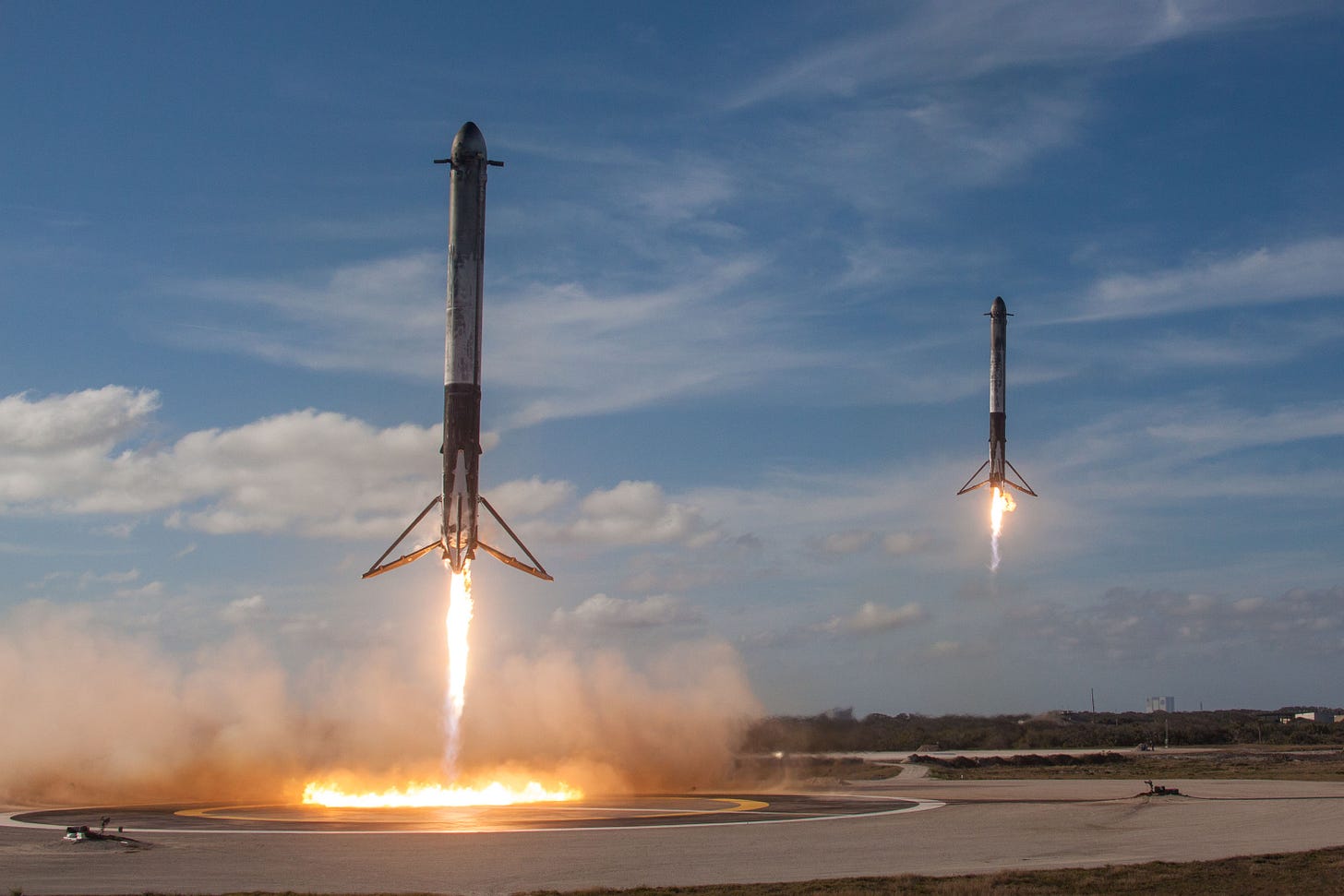

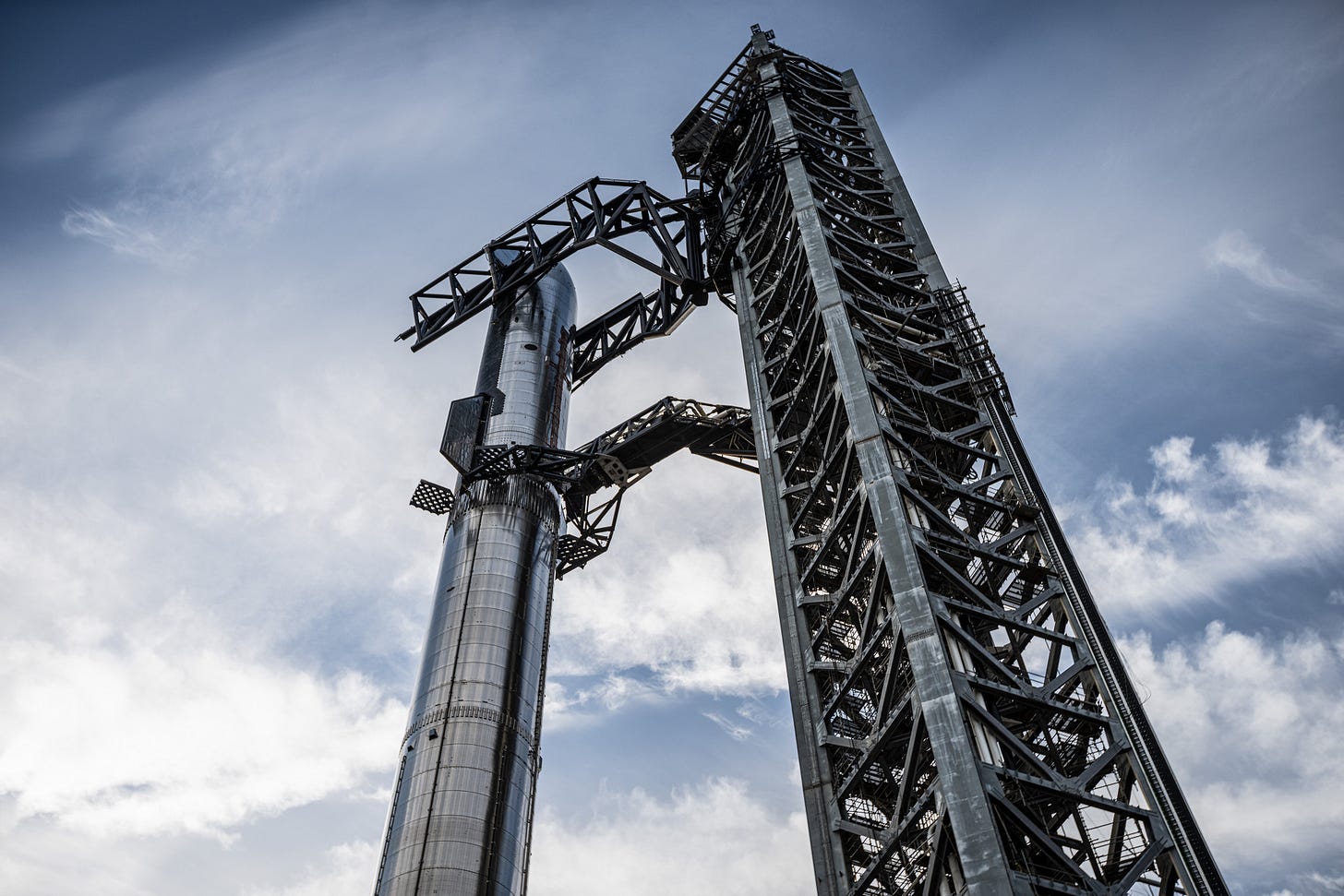

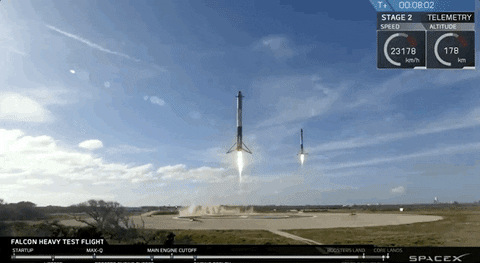
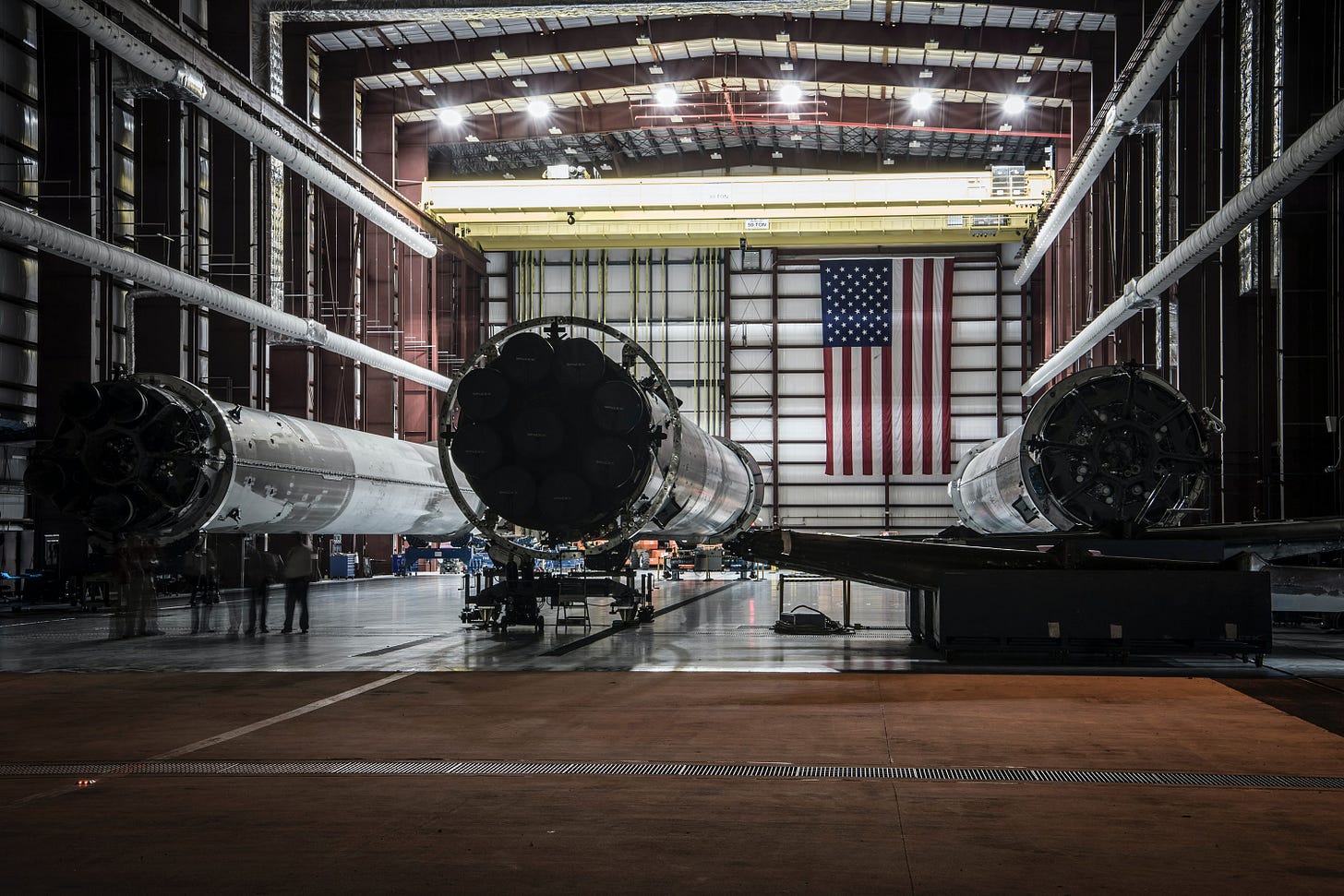
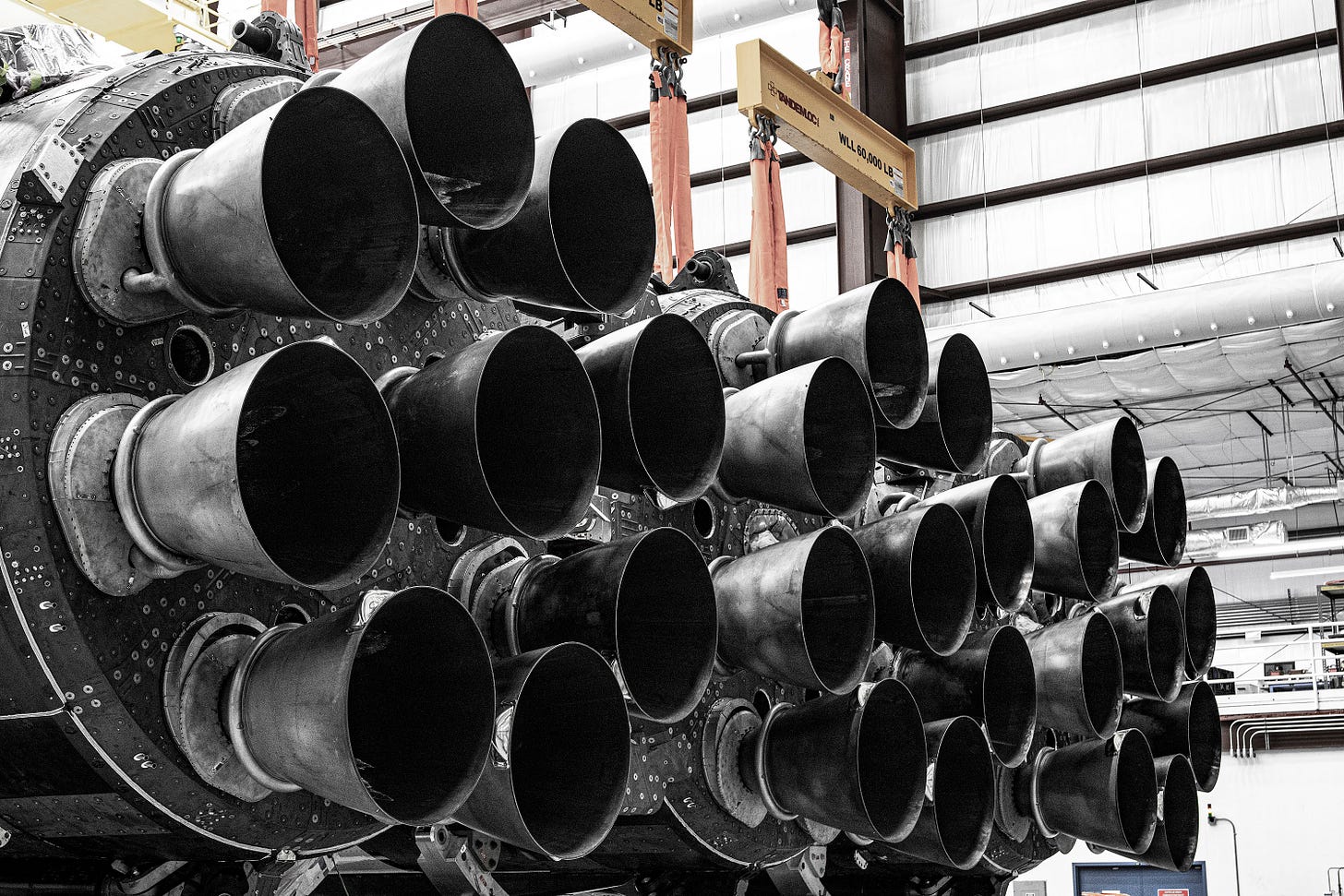

Given that SpaceX made the trade-off of turnover and employee burnout, this suggests that there is still a surplus of insanely smart, ambitious people and/or a shortage of meaningful places to work. Even for the talented, mission and meaning are in scarce supply. That's alpha on the table for founders.
I just don't get how Elon himself isn't burnt out. Or if he is, how he functions through it.
Awesome piece! Crazy to think about where SpaceX will be in 10 years. Feels like it play an essential role in our lives for generations to come.